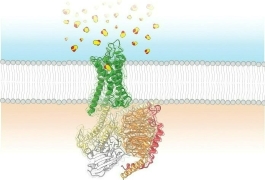New Device Harvests Water out of Thin Air

Billions of people living in drought-stricken areas may soon have improved access to water thanks to a new device that can pull potable water from air even in desert conditions. The water harvester, constructed by a group led by Evelyn Wang at MIT, is powered by only sunlight and has, at its heart, a metal-organic framework, or MOF, developed by Omar M. Yaghi’s group at the University of California, Berkeley (Science 2017, DOI: 10.1126/science.aam8743).
Yaghi’s group specializes in the development of porous, ordered nanostructures comprised of metal oxide clusters joined by organic linking molecules (MOFs). Although a variety of compounds, including zeolites and silica gels, are known to absorb water, most require high humidity to do so. In 2014, Yaghi reported a water-grabbing MOF, known as MOF-801, with the structure [Zr6O4(OH)4(fumarate)6], that could soak up to 25% of its weight in water. He approached Wang about incorporating it in a water-harvesting device.
Wang’s group built a prototype with dust-sized crystals of MOF-801 sandwiched between a solar absorber and a condenser plate, which are inside a chamber that’s open to the air. As air flows through the chamber, water attaches to the MOF. Sunlight then heats the MOF, driving the water onto a condenser, where it cools and drips into a collector. Wang estimates that over the course of one day, a 30-L version of the harvester could collect up to 12 L of water from air—enough to support a single household.
The collaboration between Yaghi and Wang could help address a lot of water needs.
Read more about the research: “Drawing water from dry air.” Chemical & Engineering News. April 17, 2017, (95)16, p. 8.




